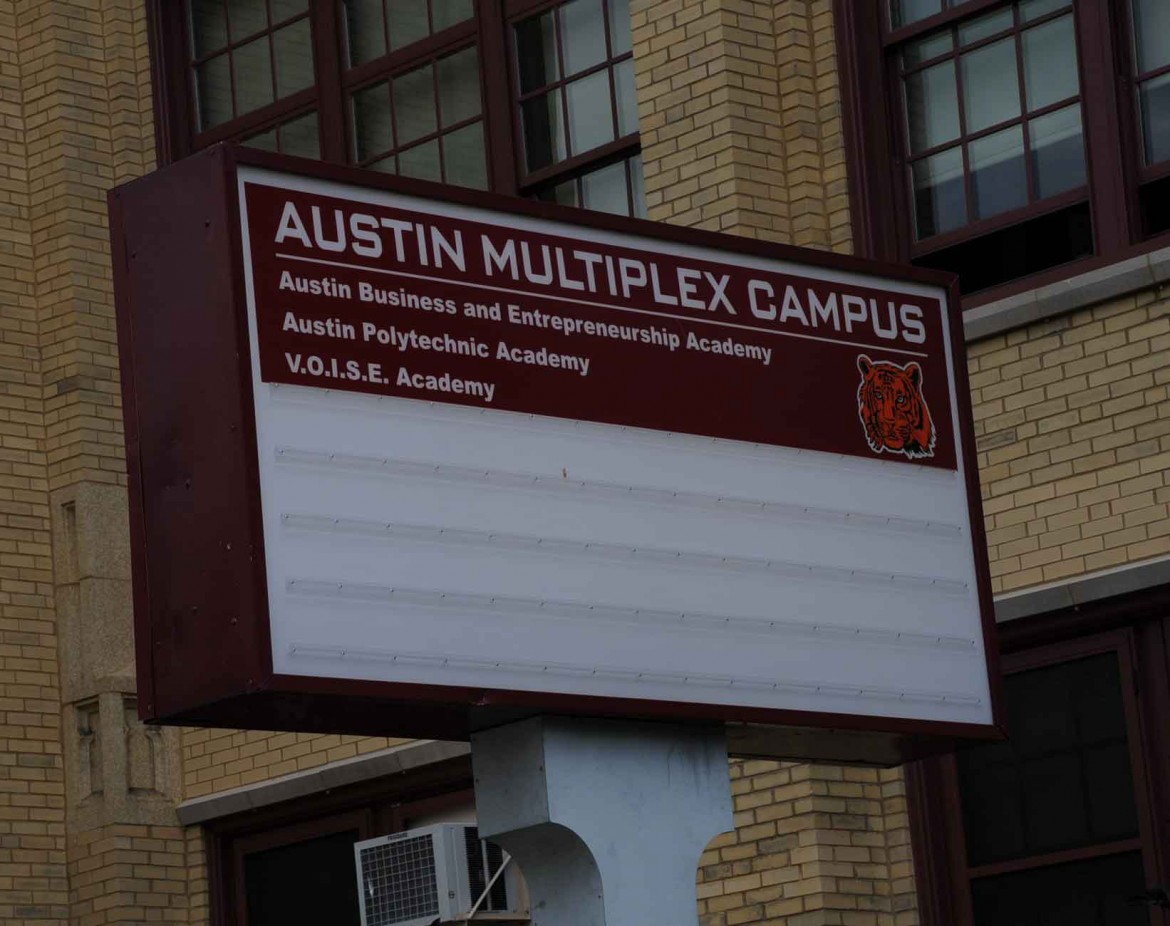A little over 10 years ago Austin High School closed, replaced by three smaller schools under the Renaissance 2010 charter school model.
That experiment is likely over as the Austin campus is set to consolidate back into a single campus by this fall, pending approval by the Chicago Board of Education at its Feb. 24 meeting.
The Austin Community Action Council, which is comprised of residents, developed the plan the board will consider later this month.
Chicago Public Schools, however, doesn’t view the change as a failure of the small school concept, though it now admits things didn’t work out as planned.
The original plan to shut down Austin High and other academically struggling schools began in the mid 2000s. Austin High, 231 N. Pine, closed its doors in 2004.
The consolidation will phase out Austin Polytechnical Academy and Austin Business and Entrepreneurship Academy but keep VOISE Academy, which has performed better academically than the other two schools, said Randel Josserand, CPS’s chief of schools for Network 3, which includes Austin.
The charter school concept was never fully accepted nor really understood by much of the community, Josserand said.
CPS had hoped to attract more students to the campus, but the opposite actually occurred, Josserand noted.
And recent studies of charter schools also bear out some of their ineffectiveness, Josserand acknowledged. A 2009 Stanford University study looked at charter schools in 18 state, including Illinois.
Smaller schools in poor minority neighborhoods like Austin was supposed to provide a winning formula for success, but that’s not been the case, according to Stanford’s Center for Research Education Outcomes, which conducted the June 2009 study.
Of the 2,400 charter schools studied by Stanford, just 17 percent showed significant growth in math compared to traditional public schools.
Thirty-seven percent had math gains that were significantly lower than their public school counterparts. The remaining schools – 46 percent – had no “statistically indistinguishable gains in math” in comparison to traditional public schools.
Illinois was among a handful of states with “significantly higher learning gains” for charter schools than public schools, according to the Stanford researchers.
But while some Chicago schools did see some success, many others did not.
“It was not as successful as we had hoped at the time,” Josserand said of Austin and other West Side schools.
The few successes included Little Village Lawndale High School campus, Josserand said.
A consolidation is also planned for Morton School of Excellence and Dodge Elementary Renaissance Academy, both East Garfield Park schools.
Josserand said the district has never done such consolidations before and sees the Austin High one as a model for others in the city.
“We’re excited about the prospects for the future of the school,” he said.
Patrick Jones, CPS’s manager of strategy and planning, said the three Austin campus schools are working together to make the transition as smooth as possible.
Mildred Wiley, a member of Austin Community Action Council, said the community, including the students, need to come together in deciding the school’s future.
Blending Austin Polytech’s and the Business Academy’s curriculum into VOISE remains a top priority, Wiley said. Keeping Austin students in the community instead of having to attend elsewhere is another.
“This is a road we haven’t built, so we need to be building this road between now and September,” Wiley said.
